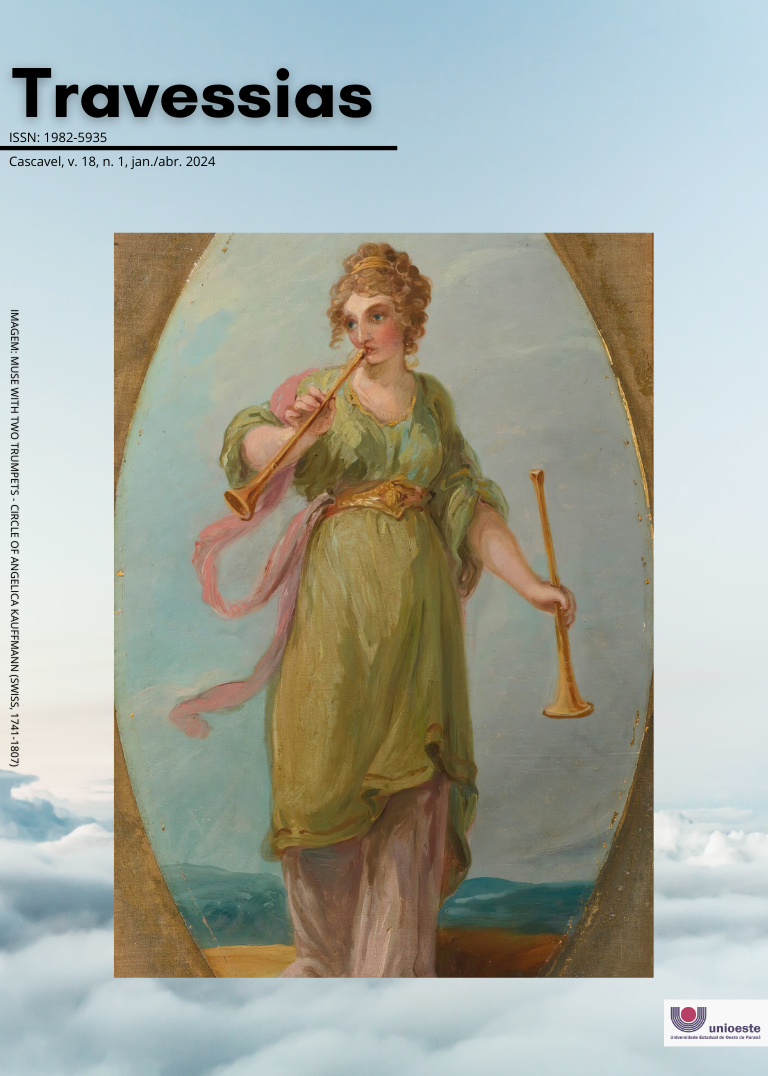Diving into your happy meal
a dialogical adventure in a sea of signs
DOI:
https://doi.org/10.48075/rt.v18i1.31745Keywords:
Bakhtin, Advertising discourse, Happy Meal, Cyber-childhoodAbstract
This article is the result of an undergraduate research developed during the under graduation course in Language and Arts between 2021 and 2022, at the University of State of Bahia (UNEB). It aimed discursively analyze a Happy Meal commercial produced by McDonalds, distributed via McDonald’s Brasil YouTube channel in the first semester of 2021. It observed the construction of the advertising discourse directed to children’s audience. The methodology used to analyze the verb-visual texts present in the campaign followed the theoretical contributions of Bakhtin Circle (2018), as well as the analytical-methodological scheme elaborated by Ferreguett (2014). In addition, it also discussed concepts such as cyber childhood (Levin, 2007; Girão, 2018) and consumerism (Bauman, 2008). From the analysis, it concluded that the McDonald’s marketing team is not only watchful on the children’s interests, as also they are attentive on discursive elements like interaction, enunciation and semiotics, for example, and by that, they can compose their advertising. This research discovered that there is a tendency from McDonald’s in reducing the commercial’s video long time without losing the acceptance of the exhibited content.
Downloads
References
BAUMAN, Z. Vida para consumo: A transformação das pessoas em mercadoria. Rio de Janeiro: Zahar, 2008.
BROUGÈRE, G. Brinquedo e Cultura. 8. ed. São Paulo: Cortez, 2010.
BUCKINGHAM, D. As crianças e a mídia: uma abordagem sob a ótica dos Estudos Culturais. Matrizes, São Paulo, v. 5, n. 2, p. 93-121, 2002.
CONANDA. Resolução nº 163/2014. Disponível em: https://crianca.mppr.mp.br/pagina-1635.html#resolucao_163. Acesso em: 26 de mar. de 2022.
CORRÊA, L. Geração Minecraft: uma abordagem cultural sobre o consumo de vídeos por crianças no YouTube Brasil. In: Comunicon (Congresso Internacional Comunicação e Consumo), São Paulo, 2015.
DOMINICO, E. Apontamento sobre a infância e sua relação com as tecnologias digitais. VII Workshop Paranaense de Arte-Ciência - Diálogos e Interfaces: as relações entre os saberes interdisciplinares e a complexidade. In: Ensino e Interdisciplinaridade. Ed. 1, n. 2, 2017.
DORNELLES, L. V. Infâncias que nos escapam: da criança na rua à criança cyber. Petrópolis: Vozes, 2008.
FERREGUETT, C. Relações dialógicas em revista infantil: processos de adultização de meninas. 2014. 243f. Tese (Doutorado em Letras) – Pontifícia Universidade Católica do Rio Grande do Sul, Porto Alegre, 2014.
FERREGUETT, C.; SCHEIDEGGER, P. H. B. Quem sempre espera por você? Uma campanha do McDonald’s para o McLanche Feliz. Missangas: Estudos em literatura e linguística, Teixeira de Freitas, v. 1, n. 1, p. 121-136, 2021.p. 121-136.
GIRÃO, L. V. O. Crianças nas mídias digitais: os usos e apropriações de crianças brasileiras no Youtube Brasil. 2018. 40f. Trabalho de Conclusão de Curso (Graduação em Psicologia) – Universidade Federal do Ceará, Sobral, 2018.
LEVIN, E. Rumo a uma infância virtual?: a imagem corporal sem corpo. Petrópolis: Vozes, 2007.
LUCA. Direção: Enrico Casarosa. Estados Unidos da América: Disney +, 2021.
MC DONALD’S. Mergulhando no McLanche Feliz. Disponível em: https://www.youtube.com/watch?v=F8dAmGan-nI. Acesso em: 26 de mar. de 2022.
RAVASIO, M. H.; FUHR, A. P. de O. Infância e tecnologia: aproximações e diálogos. ETD – Educação, Temática Digital. Campinas, v. 15, n. 2, p. 220-229, 2013.
SOCIAL BLADE. Top 100 youtubers in Brazil sorted by subscribers. Disponível em: https://socialblade.com/youtube/top/country/br/mostsubscribed. Acesso em: 26 de mar. de 2022.
YOUTUBE KIDS. Disponível em: https://www.youtubekids.com/?hl=pt. Acesso em: 26 de mar. de 2022.
VOLÓCHINOV, V. Marxismo e filosofia da linguagem: problemas fundamentais do método sociológico na ciência da linguagem. São Paulo: Editora 34, 2018.
Downloads
Published
How to Cite
Issue
Section
License
Copyright (c) 2024 Authors keep the copyright and grant the journal the right of first publication, with the work simultaneously licensed under the Creative Commons Attribution License (CC-BY-NC-SA 4.0), which allows sharing the trial with acknowledgment of authorship and initial publication in this journal.

This work is licensed under a Creative Commons Attribution-NonCommercial-ShareAlike 4.0 International License.
Creative Copyright Notice
Policy for Free Access Journals
Authors who publish in this journal agree to the following terms:
1. Authors keep the copyright and grant the journal the right of first publication, with the work simultaneously licensed under the Creative Commons Attribution License, which allows sharing the trial with acknowledgment of authorship and initial publication in this journal.
2. Authors are authorized to take additional contracts separately, for non-exclusive distribution of the work version, published in this journal (eg publish in institutional repository or as a book chapter), with acknowledgment of authorship and initial publication in this journal.
3. Authors are allowed and encouraged to publish and distribute their work online (eg in institutional repositories or on their personal page) at any point before or during the editorial process, as this can generate productive changes, as well as increase both impact and citation of the published trial (See The Effect of Free Access).
Creative Commons License
This work is licensed under a Creative Commons Attribution–NonCommercial-shareaswell 4.0 International License, which allows you to share, copy, distribute, display, reproduce, completely or part of the work, since there is no commercial purpose, and authors and source are cited.



